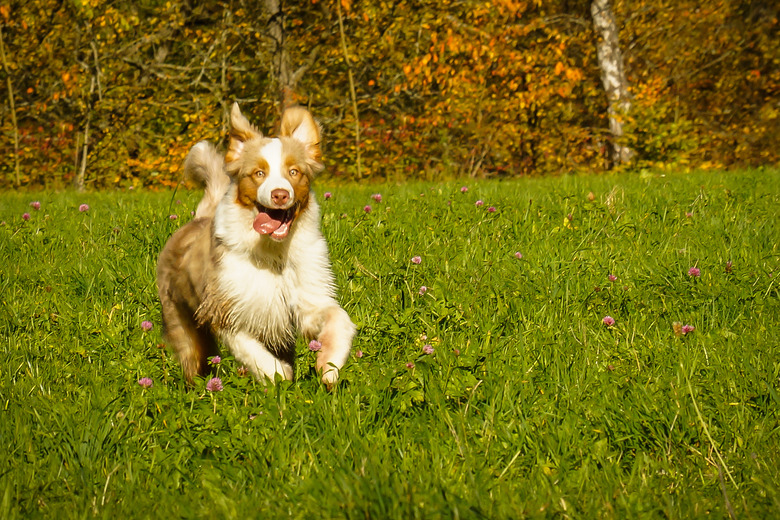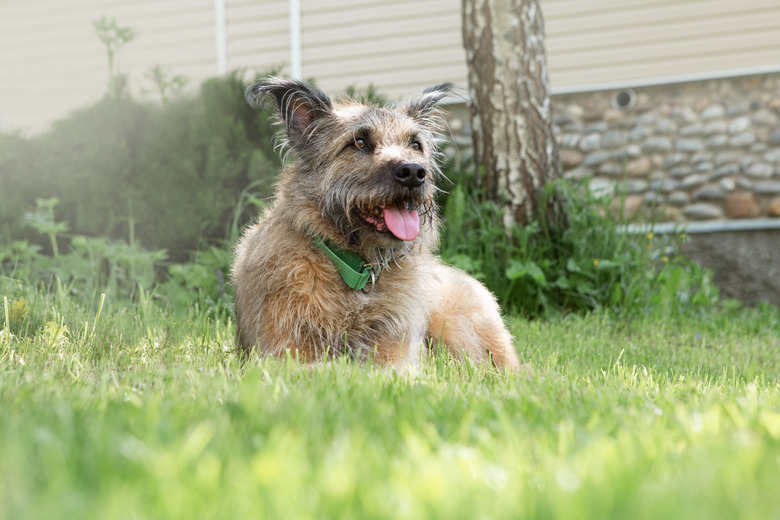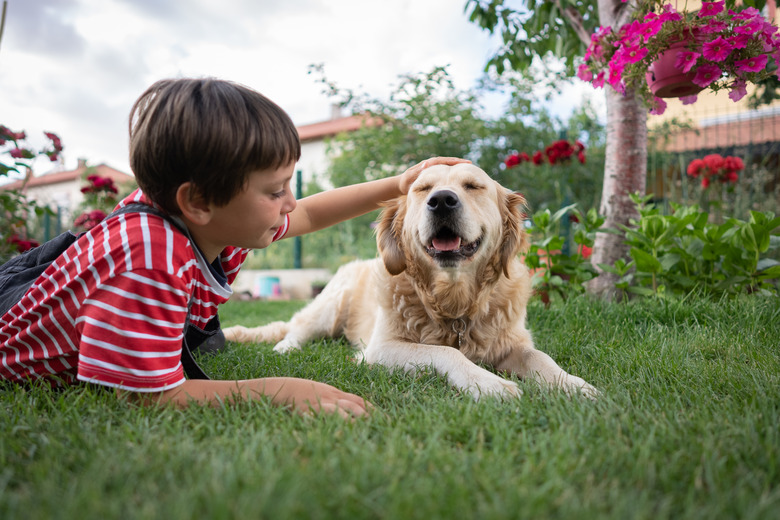How To Kill Ticks On A Dog's Ear
When dogs live in areas where ticks are prevalent, they can end up with ticks embedded in their ears or attached to other areas of their skin or body. Our DVM expert, Dr. Ingrid Taylor, a veterinarian with 16 years of experience in general clinical and emergency practice and public health, told us that to minimize the risk of infection, discomfort, or tick-borne diseases, the ticks should be removed promptly and fully, and the area should be cleaned with a disinfectant.
What are ticks?
Ticks are tiny parasites commonly found in wooded or grassy areas. There are many types of ticks that feed on the blood of dogs and other living creatures. Tick bites are dangerous because they can spread illnesses, such as Lyme disease and Rocky Mountain spotted fever.
Ticks go through four life stages, including egg, larva, nymph, and adult. The size of a tick depends on what life stage it is in as well as whether it has fed. The tiniest tick can be no larger than a grain of sand, while a fully fed adult tick can be as large as a grape. The most active tick season is from March to mid-May and from mid-August to November.
How dogs get ticks
Dogs who aren't protected with a tick preventative can easily pick up ticks. This is especially true if dogs spend time in heavily wooded areas where ticks are prevalent.
Ticks will latch onto a dog's skin or a dog's body and can often can be found on a dog's ears, belly, paws, or other exposed places. This can lead to health problems, such as tick paralysis, Lyme disease, Rocky Mountain spotted fever, babesiosis, or ehrlichiosis.
The sooner the dog owner finds and removes any dog ticks, the less chance the dog will contract a tick-borne illness. However, before engaging in tick removal, it's important to be sure it's a tick. "Sometimes people try to pull off a growth or mole," says Dr. Taylor.
How to remove ticks from dogs
When attempting to remove a tick from your dog, first don a pair of gloves. Use a pair of tweezers. "There are also various tick removal tools a pet caregiver can use, including tick keys or tick twisters," says Dr. Taylor. When using tweezers, firmly grasp the front end of the tick (where it's attached to your dog's ear) with your tweezers.
Pull firmly upward without twisting until the tick comes out. It's important to get the entire tick out, including the head of the tick, or you run the risk of infection. "If the head or mouthparts don't come out when the tick is removed, consult a veterinarian," says. Dr. Taylor. "Never use matches or lighters, or put anything, like alcohol or any kind of ointment, on the tick while it's still attached. This may cause it to regurgitate its stomach contents, and if the tick is carrying a disease, this makes it more likely your dog will become infected."
If a tick is lodged close to your dog's ear canal, see a veterinarian for removal. If you slip trying to remove it yourself, you could damage your dog's inner ear.
What to do after removing a tick from your dog
Once you've removed the tick from your dog, place the tick in a jar with rubbing alcohol, which will kill it. Put the lid on your jar of dead ticks and hang on to it. If your dog shows signs of infection, such as redness or swelling, see a veterinarian and take the ticks with you for testing and analysis.
Gently swab the area with an alcohol-soaked cotton ball or soap and water to relieve pain and itching and help to prevent infection. Always wash your hands with soap and water, rubbing alcohol, or an iodine wash after handling ticks.
Protect your dog from ticks
There are a variety of products available to help protect your dog from ticks. "All dogs who live in areas or do activities where they may be exposed to ticks should be on monthly preventatives," says Dr. Taylor. "There are oral, topical, and collar preventatives available and your veterinarian can help advise you on the best one for your dog and lifestyle."
However, even the best tick preventatives are not foolproof, so if your dog is in an area where ticks are prevalent, it's important to do daily tick checks. "In areas where ticks are present, don't wait until you're grooming or bathing your dog," says Dr. Taylor. Regularly check your dog's ears and body, particularly the underside, for tick attachment. This can be done during grooming or when bathing your dog and should be a regular habit if your dog has been playing in the woods. However, you should not wait for grooming/bathing if your dog has been walking in or playing in areas where ticks are present. Be proactive, as the sooner you find and remove any ticks, the better.
"For dogs in areas where Lyme disease is present or who travel to Lyme disease areas, you should discuss with your veterinarian whether they should have a Lyme disease vaccination," says Dr. Taylor.
Minimizing ticks in your dog's environment
Ticks are drawn to wooded and grassy areas. Even the backyard can hide an infestation of ticks. Fortunately, there are several ways to minimize ticks in your environment. First, keep your lawn trimmed and bushes cut back to help reduce the potential for ticks in your yard. Use fences to discourage deer, raccoons, and other animals that can spread ticks. Remove any leaves, garbage, or other debris where ticks can hide.
If your property backs up to a wooded area, place a 3-foot-wide barrier of wood chips or gravel between lawns and wooded areas to restrict tick migration. There are also home remedies you can use inside your home to help repel ticks in the house.
The bottom line
When ticks attach to a dog's skin and bite, they can transmit dangerous diseases, such as Lyme disease. The longer ticks are attached, the more likely they are to cause harm, so removing them quickly and thoroughly is important. Tick keys, tick twisters, or tweezers can be used to remove ticks. However, if the tick is embedded close to the ear canal, it is best to see a veterinarian to avoid damaging the dog's inner ear. Dogs often pick up ticks through exposure to wooded or grassy areas, so using tick preventatives and controlling their environment are essential.


